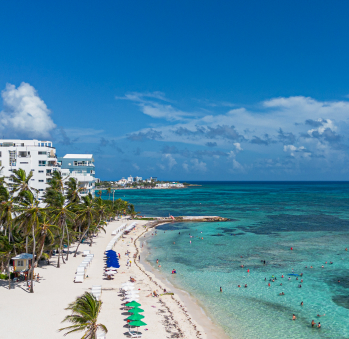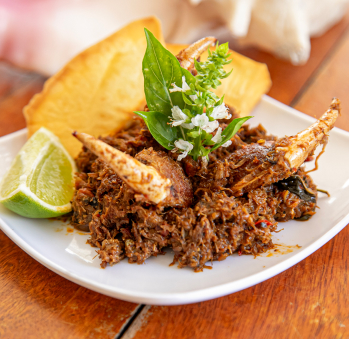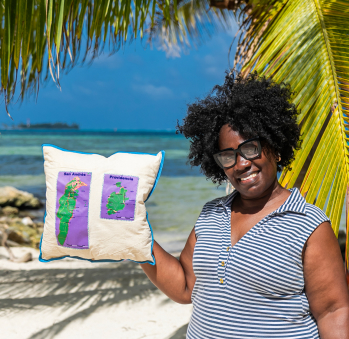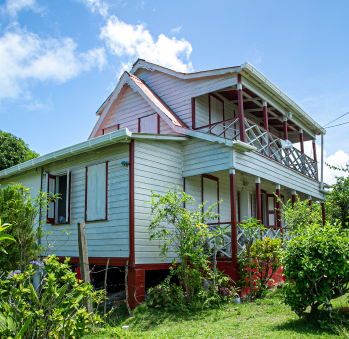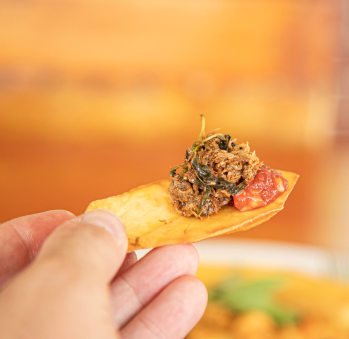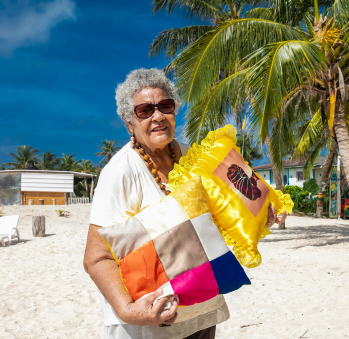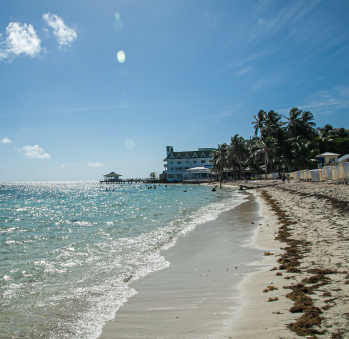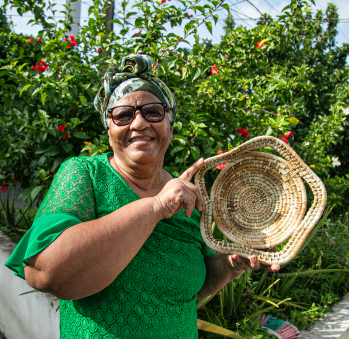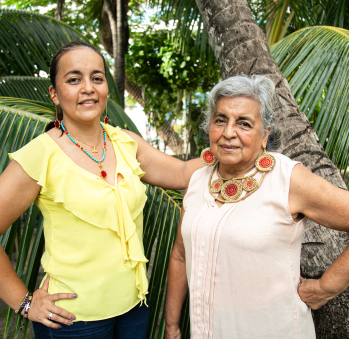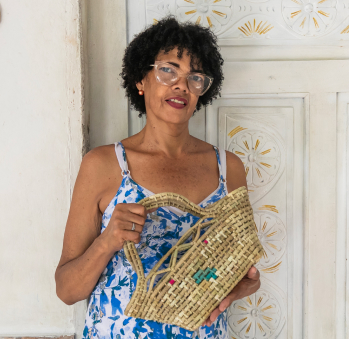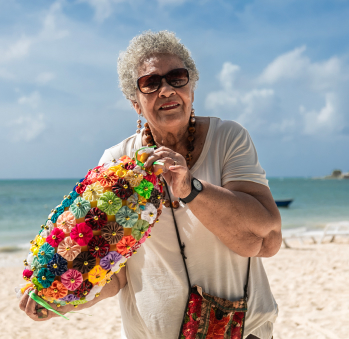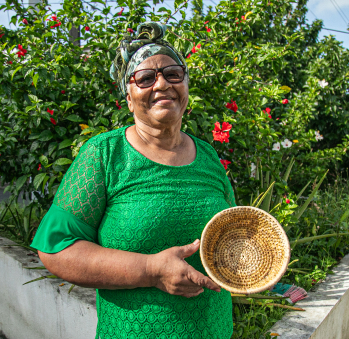San Andres Route
San Andrés, Providencia, and Santa Catalina constitute Colombia’s island territory, located in the northwest corner of its map, approximately 720 kilometers away from Cartagena de Indias. Described as the island of seven colors, San Andrés spans 26 square kilometers, making it easy to navigate. Picture yourself on a seahorse: at the north end, or the “”head,”” lies the downtown area with its beaches and tourism, including the iconic islet of Johnny Cay, accessible by boat. Moving towards the southwest, or the “”neck,”” you’ll come across La Loma, a hill from which the sea can be seen, home to the more traditional Raizal population, preserving much of its vernacular architecture, neighboring the Big Pond Lagoon. Amidst this lush nature, you’ll realize that San Andrés offers much more than just beaches and the sea. Along the island’s eastern side, the must-visit spot is San Luis, where beautiful beaches, hotels, and seafood await. Continuing towards the southern tip, known as the “”tail”” of the seahorse, you can’t miss the Hoyo Soplador. On the island’s western side, El Cove boasts mesmerizing underwater life that has blessed the island, along with the famous Morgan’s Cave.
In this paradise, we see a cultural universe of immense richness that allows us to expand the history of our national migrations. Starting with the fact that the islanders’ mother tongues are English and Creole—a remarkable dialectic blend, through which most of us will only catch a few English words—three languages in their formation speak volumes about a culture rich in pasts. Throughout this journey, you’ll have the opportunity to experience and understand the diverse origins that have populated the island. Each of the artisans composing the island has different stories, each more fascinating than the last: they have Chinese, Indian, Jamaican, British, Antioquian, and Santanderian ancestors. This magnificent composition, evident in the features and skins of its inhabitants, as colorful as its waters, is further enhanced by an element that also makes this territory unique: its Baptist faith and ritual celebration accompanied by gospel chants. To truly feel like you’ve experienced the essence of this island, a visit to the First Baptist Church in La Loma is a must. Built next to a centuries-old tamarind tree and transported piece by piece from Alabama in 1844, inaugurated on the island in 1847, it represents a piece of the island’s heritage. Speaking of rooted traditions, you must try their traditional delights, starting with the delicious breadfruit, the San Andrés cassava—a delightful fruit eaten fried, boiled, or as porridge. Of course, there’s also the typical rondón, a creamy and hearty fish soup cooked slowly with coconut milk, as well as turtle, pork, or crab dishes. Delights as unique as the experience of living among its people. As a way to resist forgetting their customs, the Sanandresanos are embracing community tourism in native lodges. They welcome visitors into their homes, immersing them in their cultural and gastronomic daily life. This is another aspect of the island that we invite you to discover. Visit San Andrés and explore it through its culture—you’ll find it to be an entirely new and wonderful experience.
Embark on a journey full of history

Artisans along the way
Artisans along the way
We recommended this tour
Schedule the visit in advance with the artisans.
Carry cash
It is necessary to pay a tax to enter San Andrés
The places are located by references, they do not have an alphanumeric address
3 days
Plane

NORTH OR THE HEAD OF THE SEAHORSE
Let yourself be enchanted by Marta Forbes and Carolyn Jay, who will show you a new side of the northern area of San Andrés. Engage and laugh with them while watching them weave with wildpine fiber and plantain trunk fibers. Although the beaches in this area are beautiful, like all the island’s beaches, they tend to get crowded. Hence, we invite you to take a motorbike or a jeep and explore the island’s eastern side. Before reaching San Luis, there are many practically empty and easily accessible public beaches. Venture out to discover them. Near San Luis, visit Miss Dorothy, another of our artisans who is also an incredible cook.
SAN LUIS AND EL COVE OR JOHNNY CAY
A day of beach and delightful seafood. Spend long hours on that white sand. And when it comes to tasting deliciousness, you’ll find traditional cooks like Miss Janice, Miss Lydia Martin, or Sweet Peppa spot on. Their rondón, smoked pork tails or pig tail, and all the dishes cooked in coconut milk are unmatched. If you decide to go to Johnny Cay, you’ll have to take a boat (you can catch one there or on the northern beaches). Once you arrive, aside from enjoying the sea, explore the interior of the island—it’s incredibly beautiful. But if you stay on San Andrés, go snorkeling or diving around Cove and La Piscinita. You can’t imagine the colors of those reefs and fish. To wrap up the afternoon, visit Hoyo Soplador and, at around 5 in the afternoon, notice how many women set up by the roadside: They are traditional cooks offering all kinds of roasted or oven-baked delights, like fish salad, shredded meat seasoned with basil, lobster, snail, shrimp, or crab empanadas, and the essential pineapple cake. Taste it all; it’s a delight. We suggest staying overnight in San Luis.
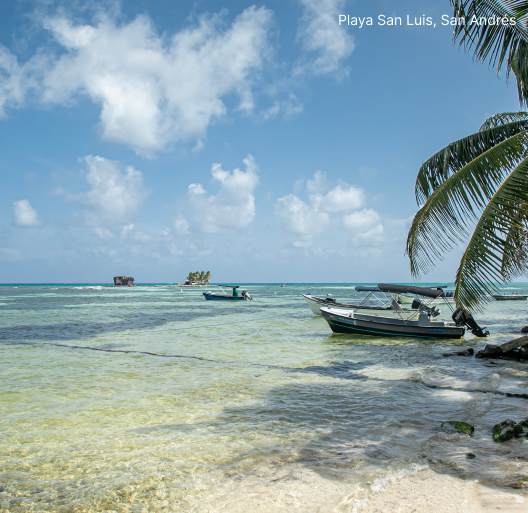
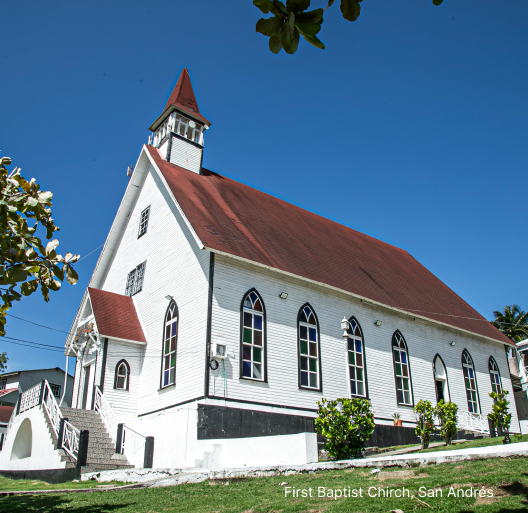
LA LOMA
La Loma is San Andrés’s B-side, where primarily artisans reside, and the island’s cultural heritage is concentrated. In this area, we want you to discover the art of patchwork and wildpine crafting, guided by its masters. You’ll understand that this culture is made up of patches. La Loma is crowned by the First Baptist Church, San Andrés’s religious icon. Discover it on a Sunday, a day of worship, and you’ll have the chance to hear the most moving gospel chants. Its wooden architecture is an example of island constructions, many of which are still preserved. Don’t miss visiting the Big Pond Lagoon, a space where, besides the magnificent nature, purebred Raizales will welcome you—many of them hospitable Rastafarians who will introduce you to their world if you wish. It’ll be a relaxed plan, and that’s how you should take it—no stress. To close the day, stay in one of the native lodges, converse with those who live and manage

Traditional cuisine
and typical bites
Provoke yourself
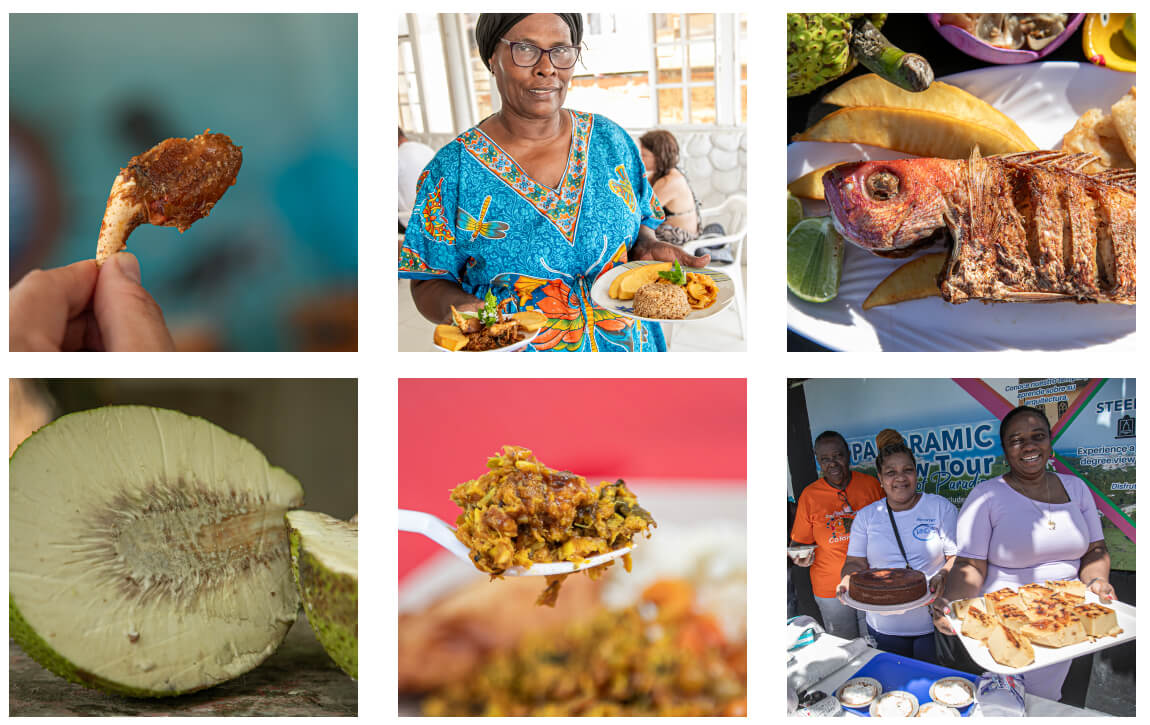
Don't leave without eating this 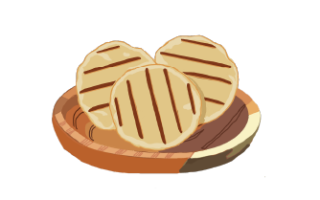
La comida tradicional del Archipiélago de San Andrés es una delicia para el paladar, pues combina los sabores del mar con los frutos tropicales y las especias. Algunos de los ingredientes más usados son el pescado, el cangrejo, el caracol, el plátano, la yuca, el ñame y el coco. Estos se preparan de diversas formas, como sopas, empanadas, albóndigas, fritos o asados. Aquí te presentaremos algunas de las preparaciones más típicas y exquisitas de esta región. El rondón es quizás el plato más emblemático de San Andrés. Consiste en una sopa cocinada en leche de coco, con pescado, caracol, colita de cerdo, plátano, yuca y domplines (tortillas de harina). Se dice que su nombre se origina porque el pescado se cocina hasta que se “deshace” o “ronda”. Es un plato muy nutritivo y sabroso, que se puede degustar en algunos restaurantes o en las mesas fair table que instalan las señoras isleñas al borde de las carreteras los fines de semana.
To lunch we go 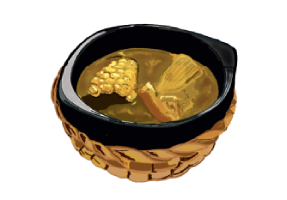
- El rondón sanandresano es un plato típico de la gastronomía caribeña, que se prepara con leche de coco, pescado, cerdo salado, plátano verde, yuca, ñame, batata y fruto del árbol del pan. Es una receta que tiene influencias de la cultura afrojamaiquina y que se llama así por el término en inglés Run Down, que significa hecho polvo o deshecho. El rondón es el sabor de las islas, una delicia que te hará amar San Andrés. Es algo que debes probar y lo puedes encontrar en toda la isla. Te recomendaremos aquellas cocineras raizales que los fines de semana cocinan acogiéndose al concepto de fair table, o cocina justa, que busca preservar las recetas tradicionales. A esto le tienen un nombre: Fih Wih Ties, que en lengua creole significa “nuestro sabor”, que promueve el valor patrimonial de las cocinas tradicionales del Archipiélago de San Andrés, Providencia y Santa Catalina. Así que si estás en el centro por la Gobernación o en la vía a San Luis, busca las cocinas de Miss Cleotilde Pomare Forbes y Miss Aminta Dilbert Bryan. Por Ground Road, visita a Miss Dilia Gordon o a Miss Isilma Steele Martínez. También allí es famoso el rondón de Miss Lydia Martínez Hudgson (Restaurante Lydia) y Miss Sandra Martínez. Por el sector de Bobby Rock están Miss Ángela Pomare y Miss Marlen Hooker. En el Cove, ve adonde Miss Caroline Hudgson Martin.
- El pescado frito es un plato muy común y fácil de encontrar en cualquier restaurante de la zona turística. Se trata de pargo rojo o cherna, que se fríe y se sirve con arroz de coco, patacones y ensalada. El arroz de coco es otro ingrediente típico de San Andrés, que se hace con leche y pulpa de coco, lo que le da un sabor dulce y aromático.
Flavors to discover and snack on 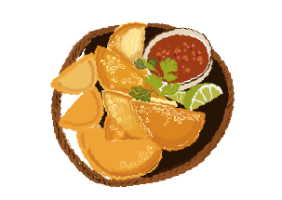
- Las empanadas de cangrejo o Crab Patty son otra delicia de la isla. El cangrejo es sazonado y preparado con especias, pimentón y cebolla, y luego cubierto de harina de maíz. Se pueden comer como aperitivo o como plato principal, acompañadas de salsa picante. En San Andrés se celebra el Festival del Cangrejo en la primera semana de enero, por la gran cantidad de este crustáceo que habita en la zona.
- Las albóndigas de pescado o fish balls son una comida rápida muy popular entre los habitantes locales y los turistas. Se hacen con pescado molido y cocido, mezclado con cebolla, ajo, orégano y harina. Se pueden comer solas o bañadas en salsa de coco, y se pueden acompañar con arroz y patacones si se convierten en almuerzo.
- El fruto del árbol del pan o breadfruit es un fruto exquisito que proviene de un árbol tradicional de San Andrés, que crece en zonas costeras y caribeñas. Su sabor es similar al del pan, y su textura es suave y harinosa. Se puede comer cocido, asado o frito en lonjas delgadas con queso encima. Es una comida rica en nutrientes y energía.
- El pastel de fruto del árbol del pan: se elabora con fruta de pan cocida y machacada, a la que se le añade leche, queso, mantequilla, huevos y especias. Se hornea en un molde engrasado hasta que quede dorado y esponjoso.
- El patacón de fruto del árbol del pan: se prepara con fruta de pan verde, que se pela, se corta en rodajas y se fríe en aceite caliente. Se aplastan las rodajas con un plato o una piedra y se vuelven a freír hasta que estén crujientes. Se sirven con sal, limón y salsa de tomate.
- El dulce de fruto del árbol del pan: se hace con fruta de pan madura, que se pela, se trocea y se cuece en agua con azúcar, canela, clavo y nuez moscada. Se deja enfriar y se guarda en la nevera. Se puede comer solo o con queso o crema.
To sweeten the palate and unmissable drinks 
- El buns es un plato típico de la gastronomía del Archipiélago de San Andrés, Providencia y Santa Catalina. Consiste en un pan dulce relleno de coco rallado y horneado, que se suele acompañar con queso y mantequilla. Tiene su origen en la influencia de los colonos ingleses que llegaron a las islas en el siglo XVII, y se ha convertido en una de las delicias más apreciadas por los habitantes y visitantes del archipiélago. El buns se puede disfrutar en cualquier momento del día, ya sea como desayuno, merienda o postre, y es una muestra de la riqueza cultural y gastronómica de esta región caribeña.
- El dulce de mango: Es una preparación a base de mango maduro cocido con azúcar y especias como clavo y canela. Se puede comer solo o acompañado de queso o crema. Es un postre muy popular en la temporada de mango, que va de mayo a agosto.
- Las bolas o bolitas de coco: Son unas bolitas hechas con coco rallado, azúcar y leche condensada, que se hornean hasta quedar doradas y crujientes. Se pueden rellenar con dulce de leche, chocolate o frutas.
- La cocada es un dulce típico de la costa e islas colombianas, que consiste en una mezcla de coco rallado, panela o azúcar morena y agua, que se cocina hasta formar una masa espesa y caramelizada. Se puede aromatizar con vainilla, canela o anís.
- La torta de ahuyama: Es un pastel elaborado con puré de ahuyama (calabaza), huevos, leche, mantequilla, azúcar y harina, que se hornea y se decora con coco rallado o azúcar glas. Es un postre muy suave y húmedo, ideal para acompañar con café o té.
En el sector del Cove Miss Anola Pomare Forbes, quien nació en San Andrés y vive en el barrio Ensenada del Cove, vende los postres típicos.
Other local delights 
- La sopa de cangrejo es una delicia que no te puedes perder. Se prepara con cangrejos frescos, leche de coco, yuca, plátano verde, cebolla, ajo, cilantro cimarrón y especias. Es una sopa cremosa, espesa y sabrosa, que se sirve caliente con arroz blanco y patacones. Es un plato típico de la gastronomía isleña, que refleja la influencia caribeña y africana en la cocina local. Es ideal para disfrutar en una ocasión especial.
- El caracol guisado es un plato típico de la cocina isleña, elaborado con caracoles de mar, leche de coco, cebolla, ajo, tomate, pimentón, cilantro y especias. El caracol se cuece lentamente en la leche de coco hasta que queda tierno y jugoso, y se sirve acompañado de arroz con coco, patacones o breadfruit. El sabor del caracol guisado es suave y cremoso, con un toque tropical y exótico que te transporta al paraíso.
- El coco es un ingrediente muy destacado en las bebidas, desde limonadas hasta cocteles, toda una gama para disfrutar del clima caribeño. Los más famosos son el agua de coco, la limonada de coco, el coco loco y la piña colada, que se hacen con agua o leche de coco y frutas cítricas, para el caso de los cocteles, generalmente un licor blanco como el ron, hielo y frutas como coco y piña.
- La tradición del té en el Archipiélago de San Andrés es una herencia de la cultura inglesa que se estableció en la región desde el siglo XVII. El té se prepara con hojas de diferentes plantas aromáticas, como la hierbabuena, el toronjil, el anís y el orégano. Se sirve caliente o frío, con o sin azúcar, y se acompaña de pan, galletas o pasteles. Es una bebida que se disfruta en cualquier momento del día, pero especialmente en las tardes, cuando se reúnen las familias y los amigos para compartir historias, risas y consejos. También, al regresar de la misa. Es más que una simple infusión, es una forma de expresar la hospitalidad, la amistad y el amor por la tierra que los acoge.
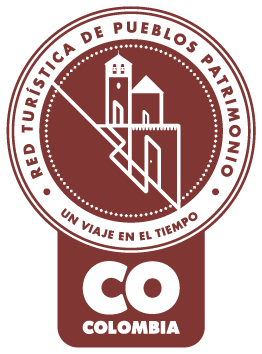
Pueblo Patrimonio
La Red Turística de Pueblos Patrimonio de Colombia es un programa especial del Ministerio de Comercio, Industria y Turismo, ejecutado por FONTUR, que trabaja con 17 municipios de Colombia que poseen declaratoria de Bien de Interés Cultural (BIC) a nivel nacional para su valoración y proyección mediante el turismo, generando así más oportunidades de desarrollo y sostenibilidad en las comunidades.

La Medalla a la Maestría Artesanal es un galardón que Artesanías de Colombia entrega anualmente, con el cual se hace un reconocimiento a aquellos artesanos, empresas y comunidades artesanales que, contando con una trayectoria destacada, sobresalen a nivel nacional por su excelencia en el oficio así como por preservar el quehacer artesanal.

Denominación de Origen
Es un signo distintivo que identifica productos reconocidos o famosos por tener una calidad o características específicas derivadas esencialmente del lugar de origen y la forma tradicional de extracción, elaboración y producción por parte de sus habitantes. La protección conferida sobre una Denominación de Origen implica que ninguna persona puede identificar con la denominación protegida productos iguales o similares a los amparados, cuando no provengan del verdadero lugar y no cumplan con las características o calidades que le han dado la reputación al producto reconocido. Las Denominaciones de Origen para productos artesanales colombianos que han sido protegidas por la Superintendencia de Industria y Comercio en nuestro país son actualmente 12.
No puede copiar contenido de esta página









































